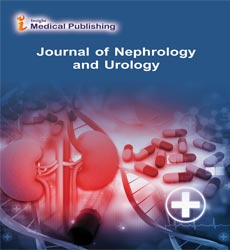Neutrophil Gelatinase-Associated Lipocalin (NGAL) as a bi-omarker of Iron Deficiency among Egyptian Haemodialysis Patients
Abstract
Objectives: Evaluation of NGAL in a small cohort of patients in order to assess any relationships it may have with the iron balance, and its efficacy as a biomarker of iron deficiency.
Methods: The study is a cross sectional study and sample size is 80 CKD patients stage 5 on chronic dialysis therapy with a dialytic rhythm of four-h sittings three times every seven days. The study was done on 80 regular haemodialysis (HD) patients (51 males and 29 females) chosen from dialysis units of Eldakahlia hospitals. The research was performed over a duration of one year.
All cases were on constant dose of rHuEPO for at least one and half month and not injected by IV iron supplementation or packed RBCs in 60 days prior to the beginning of the research.
Patients were subdivided into 2 categories: -
Category (1): - Cases with TSAT<30%, (their number is 50).
Category (2): - Cases with TSAT>30%, (their number is 30).
NGAL is measured in the serum by utilizing the ELISA commercially accessible kit (NOVA) bioneovan company, China according to the manufacture`s instruments and its level is expressed as ng/ml.
Results: There was a high significant difference between two groups regarding serum NGAL level. NGAL levels were significantly increased inHD patients in comparison with non HD group. HD patients withTSAT<30% had less level of NGAL values than HD patients with TSAT>30%. In ROC analysis, The best NGAL cut-off value capable to recognize iron deficiency was ≤ 51.893 ng/mL and it was superior to the ‘recommended’ cut-off value of ≤ 500ng/mL by KDIGO guideline in both sensitivity and specificity.
Conclusion: In conclusion, our study demonstrates that plasma NGAL level is independently accompanying with iron condition and may induce better than serum ferritin in identifying iron deficiency in HD cases. The possible usage of NGAL calculation in the evaluation of iron condition between cases undergo dialysis might be of high potential; however the outcomes of the current research are preliminary. Similarly, more assessments are needed to establish whether NGAL calculation might be helpful in the control of iron medication, as before recorded for different managements.
Open Access Journals
- Aquaculture & Veterinary Science
- Chemistry & Chemical Sciences
- Clinical Sciences
- Engineering
- General Science
- Genetics & Molecular Biology
- Health Care & Nursing
- Immunology & Microbiology
- Materials Science
- Mathematics & Physics
- Medical Sciences
- Neurology & Psychiatry
- Oncology & Cancer Science
- Pharmaceutical Sciences
